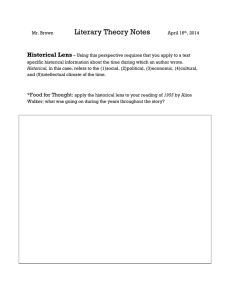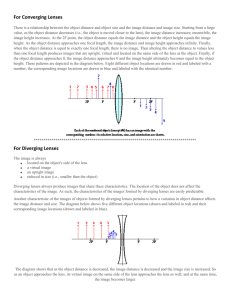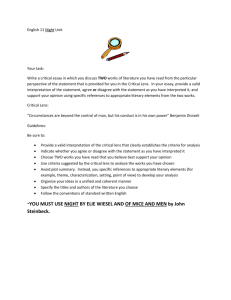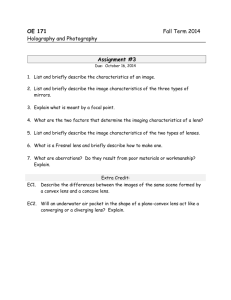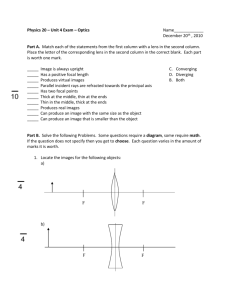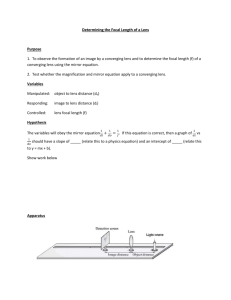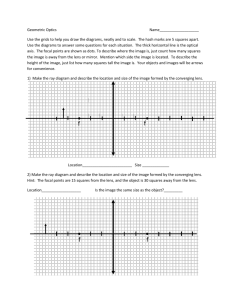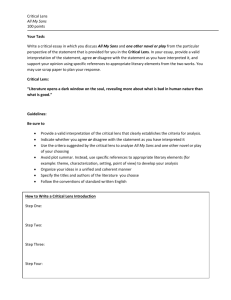9 - Cabrillo College
advertisement
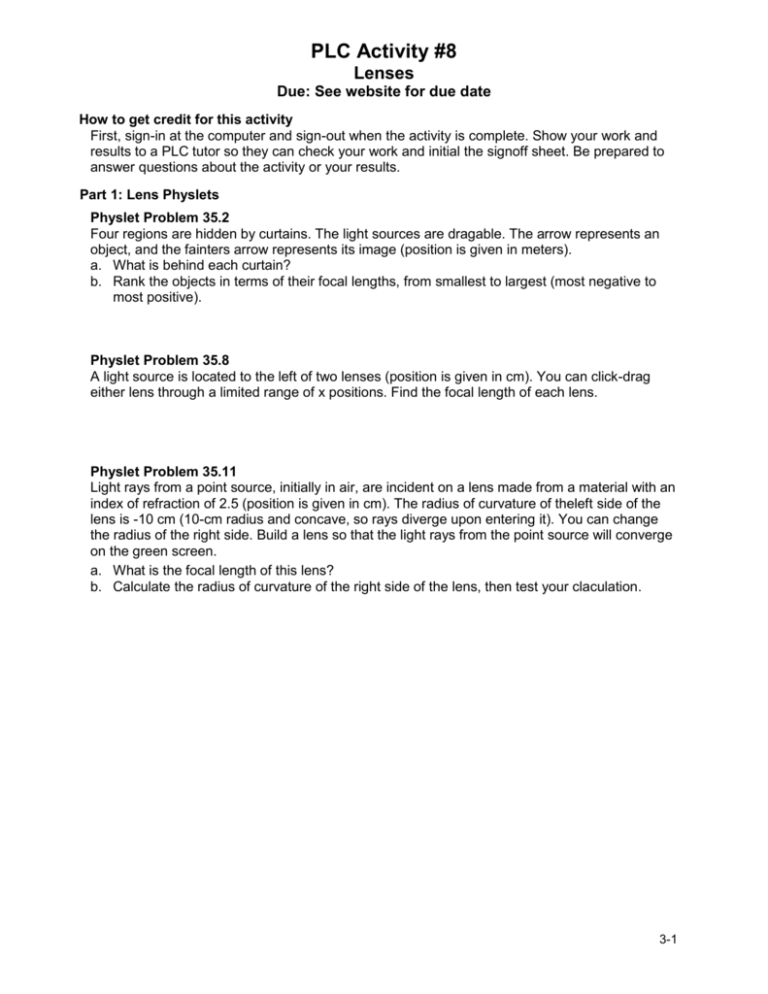
PLC Activity #8 Lenses Due: See website for due date How to get credit for this activity First, sign-in at the computer and sign-out when the activity is complete. Show your work and results to a PLC tutor so they can check your work and initial the signoff sheet. Be prepared to answer questions about the activity or your results. Part 1: Lens Physlets Physlet Problem 35.2 Four regions are hidden by curtains. The light sources are dragable. The arrow represents an object, and the fainters arrow represents its image (position is given in meters). a. What is behind each curtain? b. Rank the objects in terms of their focal lengths, from smallest to largest (most negative to most positive). Physlet Problem 35.8 A light source is located to the left of two lenses (position is given in cm). You can click-drag either lens through a limited range of x positions. Find the focal length of each lens. Physlet Problem 35.11 Light rays from a point source, initially in air, are incident on a lens made from a material with an index of refraction of 2.5 (position is given in cm). The radius of curvature of theleft side of the lens is -10 cm (10-cm radius and concave, so rays diverge upon entering it). You can change the radius of the right side. Build a lens so that the light rays from the point source will converge on the green screen. a. What is the focal length of this lens? b. Calculate the radius of curvature of the right side of the lens, then test your claculation. 3-1 Part 2: Ranking Problems Question 1 The table details six variations of the basic arrangement of two thin lenses represented in the figure. An object is distance p1 to the left of lens 1. (a) For which variations can we tell, without calculation, whether the final image (that due to lens 2) is to the left or right of lens 2 and whether it has the same orientation as the object? (b) For those “easy” variations, give the image location as “left” or “right” and the orientation as Variation Lens 1 Lens 2 “same” or “inverted.” 1 2 3 4 5 6 Converging Converging Diverging Diverging Diverging Diverging Converging Converging Converging Converging Diverging Diverging p1 < |f1| p1 > |f1| p1 < |f1| p1 > |f1| p1 < |f1| p1 > |f1| Question 2 In the figure, stick figure O stands in front of a lens that is mounted within the boxed region. The four stick figures I1 to I5 suggest general locations and orientations for the images that might be produced by the lens (not to scale). (a) Which if the stick figures could not possibly represent images? Of the possible images, (b) which would be due to a converging lens, (c) which would be due to a diverging lens, (d) which would be virtual, and (e) which would involve negative magnification? Explain your reasoning. Question 3 Use precise language to describe the image characteristics (image location relative to f and 2f, magnification) for the following photos A through E. Question 4 The figure shows four thin lenses, all of the same material, with sides that either are flat or have a radius of curvature of magnitude 10 cm. Without written calculation, rank the lenses according to the magnitude of the focal length, greatest first. 3-2
